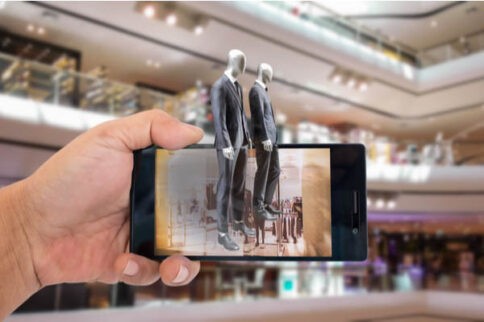
Augmented reality is the new technology that everyone seems to want, whether it be part of their business or for personal use. With the rise of the smartphone and its integrated camera, it is no wonder that AR technology can be beneficial to how consumers interact with stores, businesses, and shopping. According to a new report, AR advertising is quickly gaining popularity in consumer circles, mainly because it saves time and money. The consumer has all his or her needs taken care of so is it time for businesses to pay attention to what AR can do for their businesses?
Martin Kon, BCG partner, and co-author of the report Augmented Reality: Is the Camera the Next Big Thing, states that it is important to monitor the progression of AR advertising. He mentioned that no one knows how the camera marketing will evolve, but he advised CMOs to have an AR strategy sooner rather than later. It is better to be prepared for a change this big whilst it is still in its beginning stages. Companies who have already prepared an AR strategy have already started reaping the rewards.
The report examined the effects of AR marketing on the consumer. Based on data from 2017 that was taken from AR apps such as Snap and Pokémon Go, an estimated 80 million people in the US engage with AR at least once a month. The majority of consumers are millennials (19-34 years old) and members of the Generation Z group (age 18 and younger). It is expected that about 120 million people in the US will be using AR technology by 2020. Judging by these staggering predictions, it is clear that AR will not be disappearing any time soon.

Over 50 of the top 200 advertisers in the US participated in the study that was included in the report and many key insights were obtained. Nine out of ten large consumer advertisers are already using or planning on using AR advertising but only one out of ten said that it plays a vital role in their marketing strategy. Marketers also reported that market maturity is a problem when using AR. They claimed that it required too big of an investment and that it didn’t reach their entire audience. Another issue that was raised was the fact that only one in five advertisers considered incremental sales to be their primary objective for AR marketing whereas one-third of advertisers said it will be their primary objective over the next 24 months.
Experts have noted that marketers need to take action in five areas to execute their AR strategies successfully. These areas include building AR into the core marketing portfolio and picking the right platform for AR strategy. If the foundation of AR advertising exists only in theory then it will not be beneficial for businesses. The right tools, training, and implementation need to occur for it to be successful.
April 13, 2018























